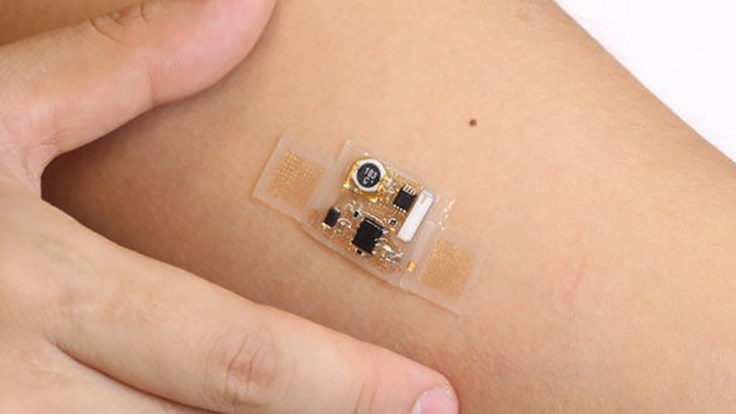Biosensor is an analytical device that converts biological reactions into measurable physiochemical signals which is proportional to analyte concentration. Biosensors can be used for the detection various substances like metabolites, pollutants, microbial load, control parameters etc. A typical biosensor consists of two elements: biological sensing element and a transducer for the detection of analyte concentration.
Biological reaction takes place in close contact with the transducer to ensure that most of the biological reaction is detected. A third element reference can be added along with the two elements which produce a small reference signal without analyte and serves as a control of the experiment. In this case the difference between the two signals is analysed which is proportional to the concentration of the material being measured. The major advantage of using biosensor as compared to the other conventional techniques used for measurement of analyte like biochemical assays, immunoassays and PCR based assays is that the sample can be used with no prior clean up, reusability and rapid response along with high specificity.
The first biosensor was invented by Professor Leland C Clark Jnr. and he is known as the father of the biosensor concept. On 15 April 1956, at a meeting of the American Society for Artificial Organs during the annual meetings of the Federated Societies for Experimental Biology, the biosensor invented was named after him as “Clark electrode”. In 1956, Clark published his definitive paper on the oxygen electrode. The concept was illustrated by an experiment in which glucose oxidase was entrapped at a Clark oxygen electrode using dialysis membrane (Turner, 1996). This biosensor was made from a thin layer of glucose oxidase (GOx) on an oxygen electrode.
The amount of glucose was estimated by the reduction in the dissolved oxygen concentration. Clark’s ideas became commercial reality in 1975 with the successful re-launch (first launch 1973) of the Yellow Springs Instrument Company (Ohio) glucose analyser based on the amperometric detection of hydrogen peroxide (Turner 1996). In 1963 Garry A. Rechnitz together with S. Katz introduced one of the first papers in the field of biosensors with the direct potentiometric determination of urea after urease hydrolysis. At that time the term “ biosensor ” had not yet been coined. Thus, these types of devices were called enzyme electrodes or biocatalytic membrane electrodes. For the first time, in 1964 enzymes were used as fuel cell catalysts by Yahiro et al. in a glucose/O 2biofuel cell. In 1969 George Guilbault introduced the potentiometric urea electrode.
In 1973 Ph. Racinee and W. Mindt developed a lactate electrode. In 1976 came the first microbe-based biosensor and finally in 1977 Karl Cammmann introduced the term “biosensor”. Lubbers and Opitz coined the term optode in 1975 to describe a fibre-optic sensor with immobilised indicator to measure carbon dioxide or oxygen (Turner, 1996). They extended the concept to make an optical biosensor for C2H5OH by immobilising C2H5OH oxidase on the end of a fibre-optic oxygen sensor. The idea of building direct immunosensors by fixing antibodies to a piezoelectric or potentiometric transducer had been explored since the early 70’s, but it was a paper by Liedberg et al. (1980) that was to pave the way for commercial success. They described the use of surface plasmon resonance to monitor affinity reactions in real time.
The BI Acore (Pharmacia, Sweden) launched in 1990 is based on this technology (Turner, 1996). In 1979 pioneering work by J. Kulys using artificial redox mediators and in 1984 Cass et al. introduced first ferrocene-mediated amperometic glucose biosensor which was commercialised by MediSense Inc. in 1987 with a pen-sized meter for home blood-glucose monitoring.. In 1997 IUPAC introduced for the first time definition for biosensors in analogy to the definition of chemosensors. An enzymatic glucose/O 2 fuel cell which was implanted in a living plant was presented by Heller and coworkers in 2003. The first H 2 /O 2 biofuel cell based on the oxidation of low levels of H 2 in air was introduced by Armstrong and coworkers (2006). In 2007 an implanted glucose biosensor (freestyle Navigator system) operated for five days (Borgmann et al., 2011).
Recently nano-biosensors, implanted biosensors and integrated biosensors are in current research and development. In the past 40 years various biosensors have been researched and developed encompassing a wide range of applications but the number of commercially available biosensors are limited. Hence Biosensor technology is an upcoming field and with continued progress, we can expect that biosensors can become simpler and more widely available commercially.
